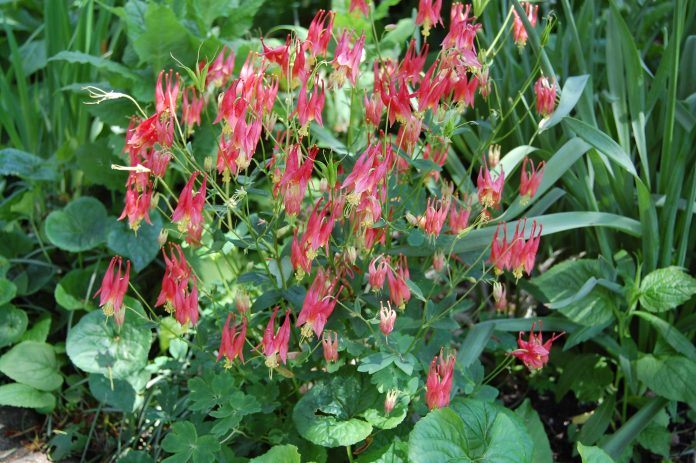“Plugged-in colour”. It is an expression that Mark made up while shooting TV, a few years ago.
Everyone that loves to create a flower garden or plant up containers with colour is looking for colour that, well, pops!
Let us introduce you to our favourite flowering plants that are guaranteed to attract attention:
Annuals:
- Portulaca. Plant in full, blazing sun and enjoy the knock-dead primary colours of this low growing ground creeper or use in containers to hang over the edge. Brilliant red, orange, yellow and pure white. Portulaca’s near relative Ice Plant features flowers that open in the sunshine and close late in the day when the sun is going down. A sunworshipper if there ever was one. Tolerant of dry conditions.
- Gerbera. Pure advertising. It is like someone wired them underground, in the root zone, with high voltage for colour. A member of the dandelion family, this flowering annual also blooms when the sun is shining on it and closes when the sun goes in. It wilts when roots are not moist but rehydrates like a sailor. Brilliant red, yellow, and orange. Grows to 15 or 20 cm height.
- Calendula. Once known as pot marigold, this hardy annual flowering plant produces hordes of bright orange flowers that are suitable for cutting. While it is technically an annual, Mark sows his calendula directly in the ground this time of year as the plants are marginally frost hardy. Old fashioned, easy to grow from seed. Matures to about 30 cm high. Plant in full sun. Blooms are edible.
- Zinnias. Perfect for the frugal gardener, as zinnias grow best when sown directly in the soil from seed. Perfect also for the cut flower gardener, producing a riot of colourful blooms born on short stems, 20 cm high “pom poms”. Prefers full sun.
For year-after-year colour, try these perennials for eye popping colour:
a. Gaura. A long flowering perennial that will thrive in your Toronto/zone 6 garden for three or four years then disappear. We have no idea where they go, but gaura is not exactly a true perennial the way daylilies and peonies are. But they are worth having for their pure white or pink spike-like flowers. Line your walkway up to your front door with gaura and the next Amazon delivery person may just knock on your door and ask what they are. Butterfly attractant.
b. Geum. Not as popular as it deserves to be, geum is a short, 20 cm high accent plant that flowers from late spring to early summer. Tolerant of dry conditions, look for bright orange, pink or yellow flowering plants.
c. Cardinal Flower (lobelia) Bright red, blooms in late summer through fall and is worth the wait. Attracts butterflies, hummingbirds and people who love bright primary colour. Perfect for your “Year of the Garden”, as we are all encouraged to plant plenty of red flowers this year during The Year of the Garden in Canada (https://livethegardenlife.gardenscanada.ca/). All the better, a native plant in southeastern Canada.
d. Columbine. Origami mixed. An eye-popper if there ever was one. Not a reliable perennial, but columbine will regrow in your garden for at least a couple of years. Matures to 40 cm height. Mixed, attention-seeking colours.
e. Phlox. Creeping phlox blooms this time of year and is popular as a rock garden plant that creeps over rocks and attracts attention to itself. Pink, white and violet. Summer phlox grows to about 75 cm high and flowers early to late summer. This plant deserves a shout-out from us as it is always shouting in technicolour.
There are many other brightly coloured plants that lend themselves to the attention-seeking garden including marigolds, peonies, daylilies and scabiosa. Take your time looking over the selection of Wow flowering plants early this season at your favourite garden retailer.
Mark Cullen is an expert gardener, author, broadcaster, tree advocate and Member of the Order of Canada. His son Ben is a fourth-generation urban gardener and graduate of University of Guelph and Dalhousie University in Halifax. Follow them at markcullen.com, @markcullengardening, and on Facebook.


